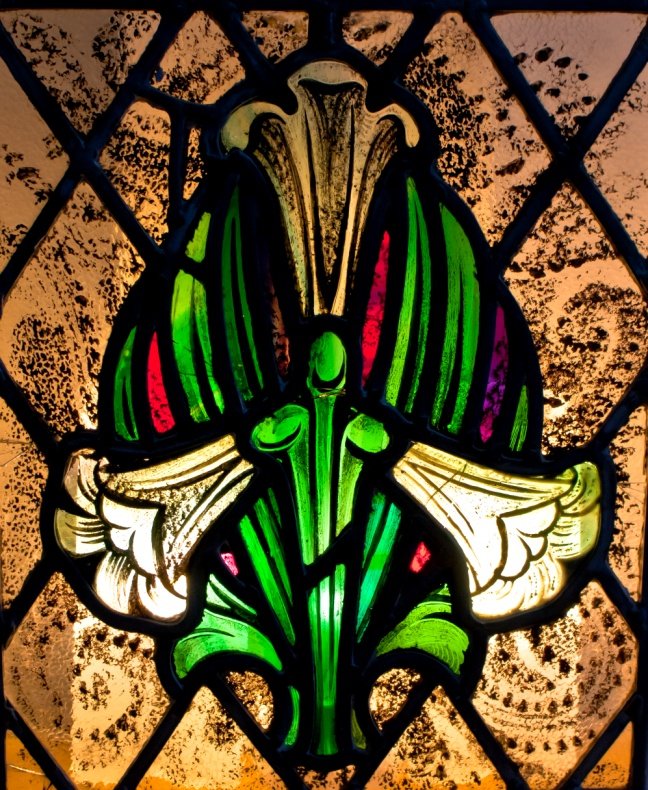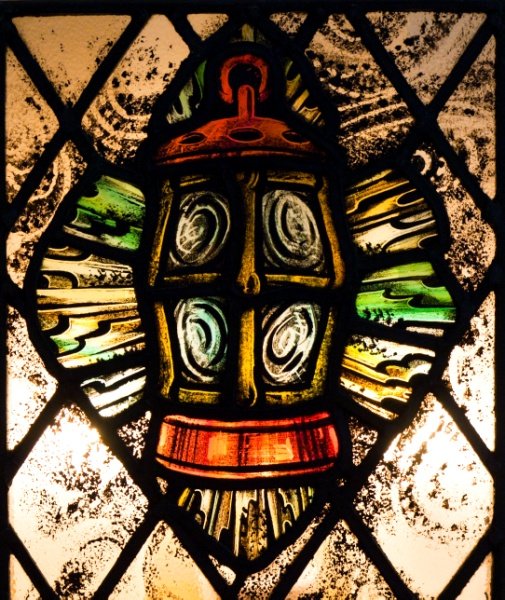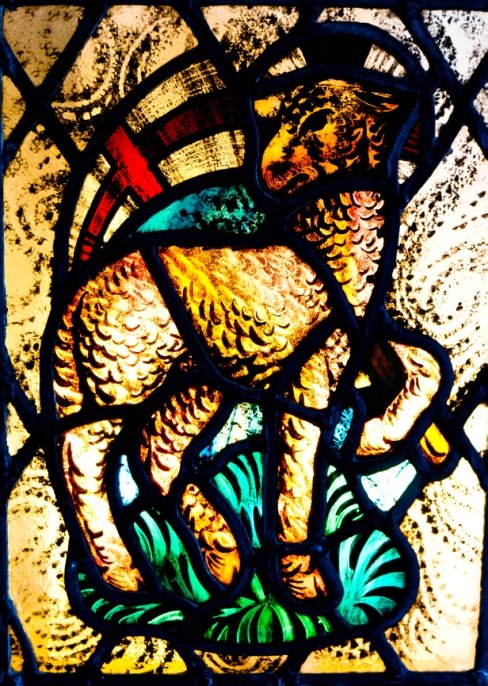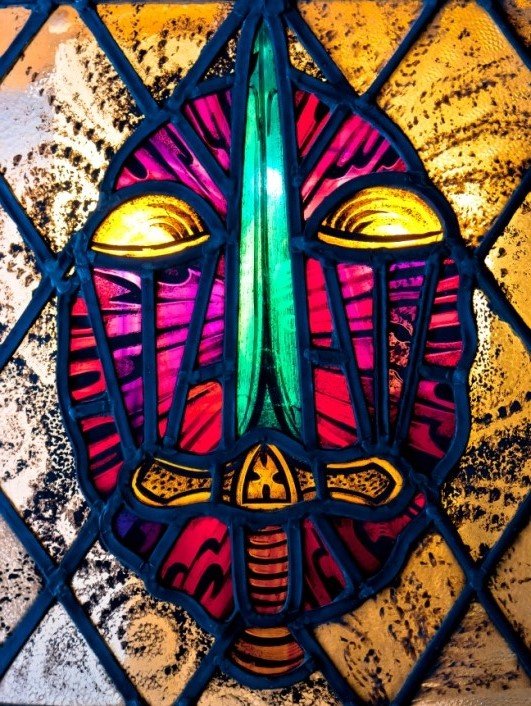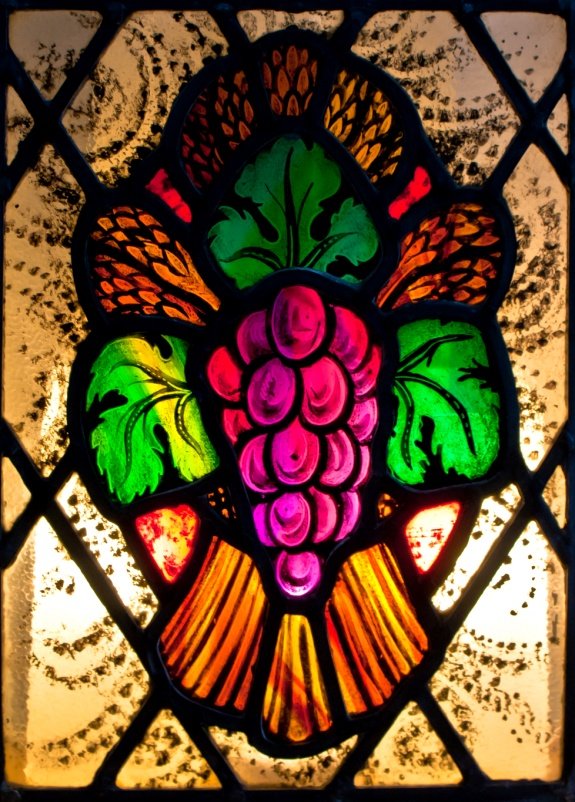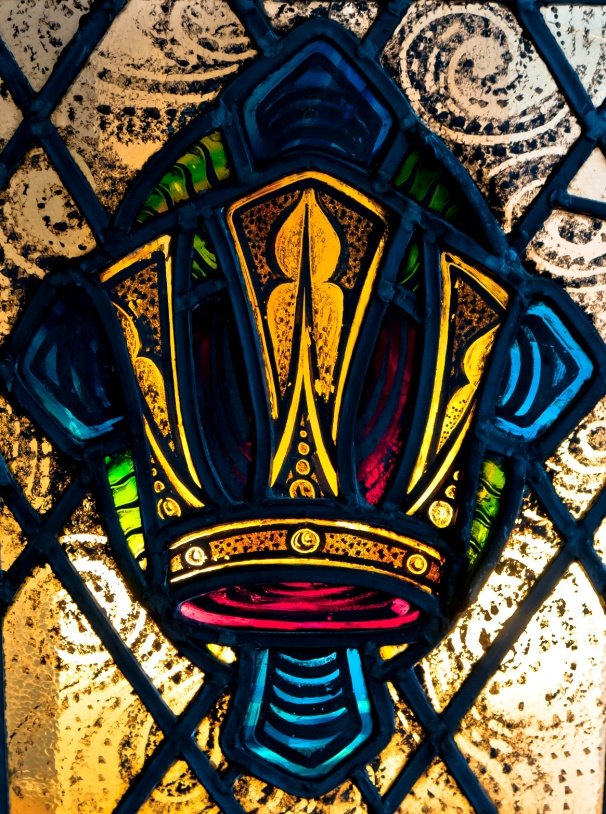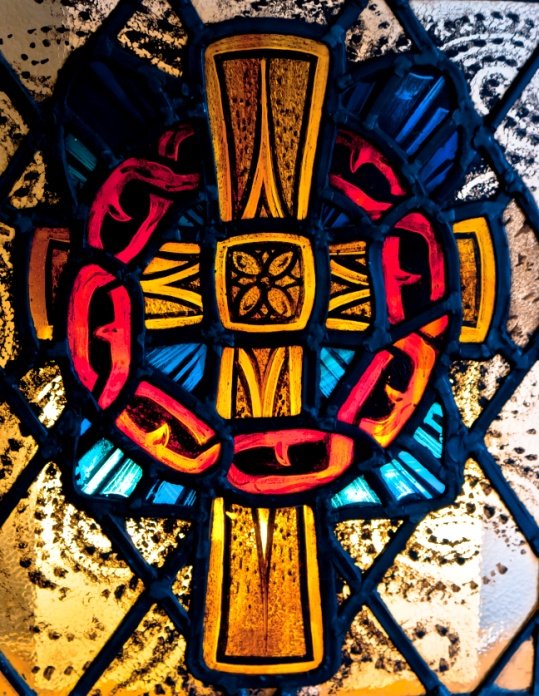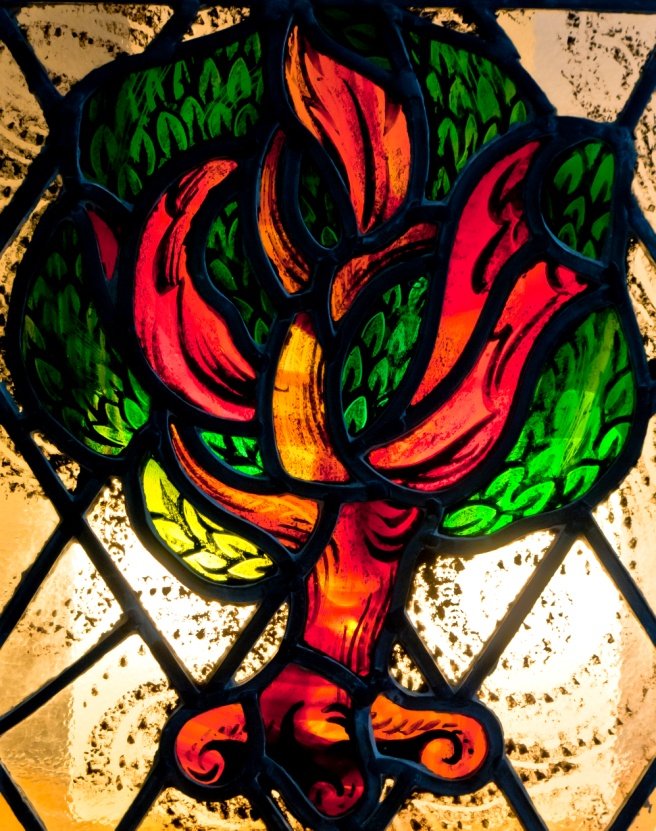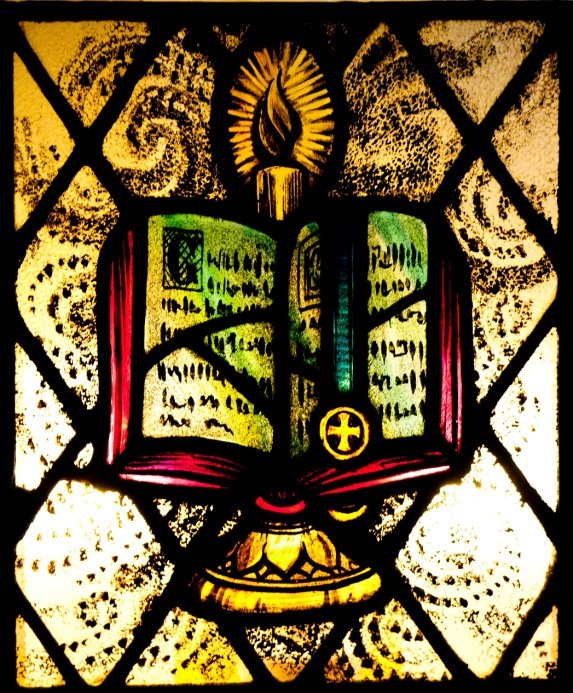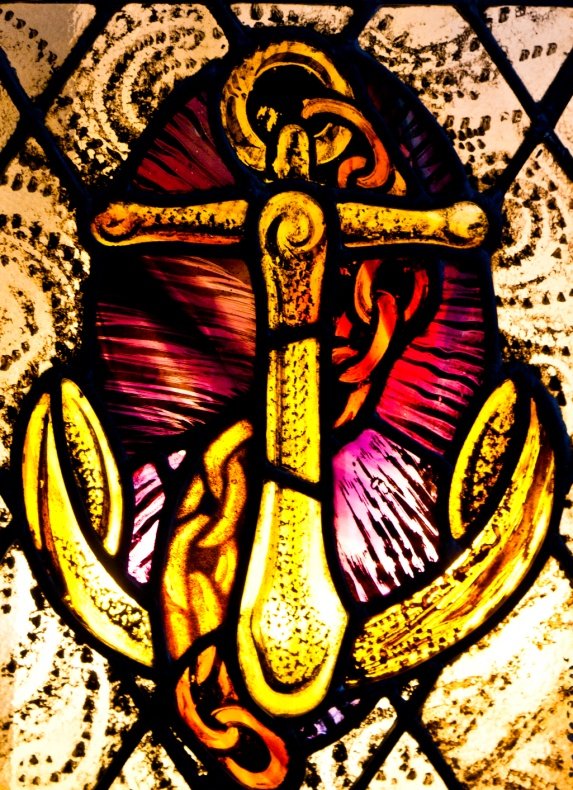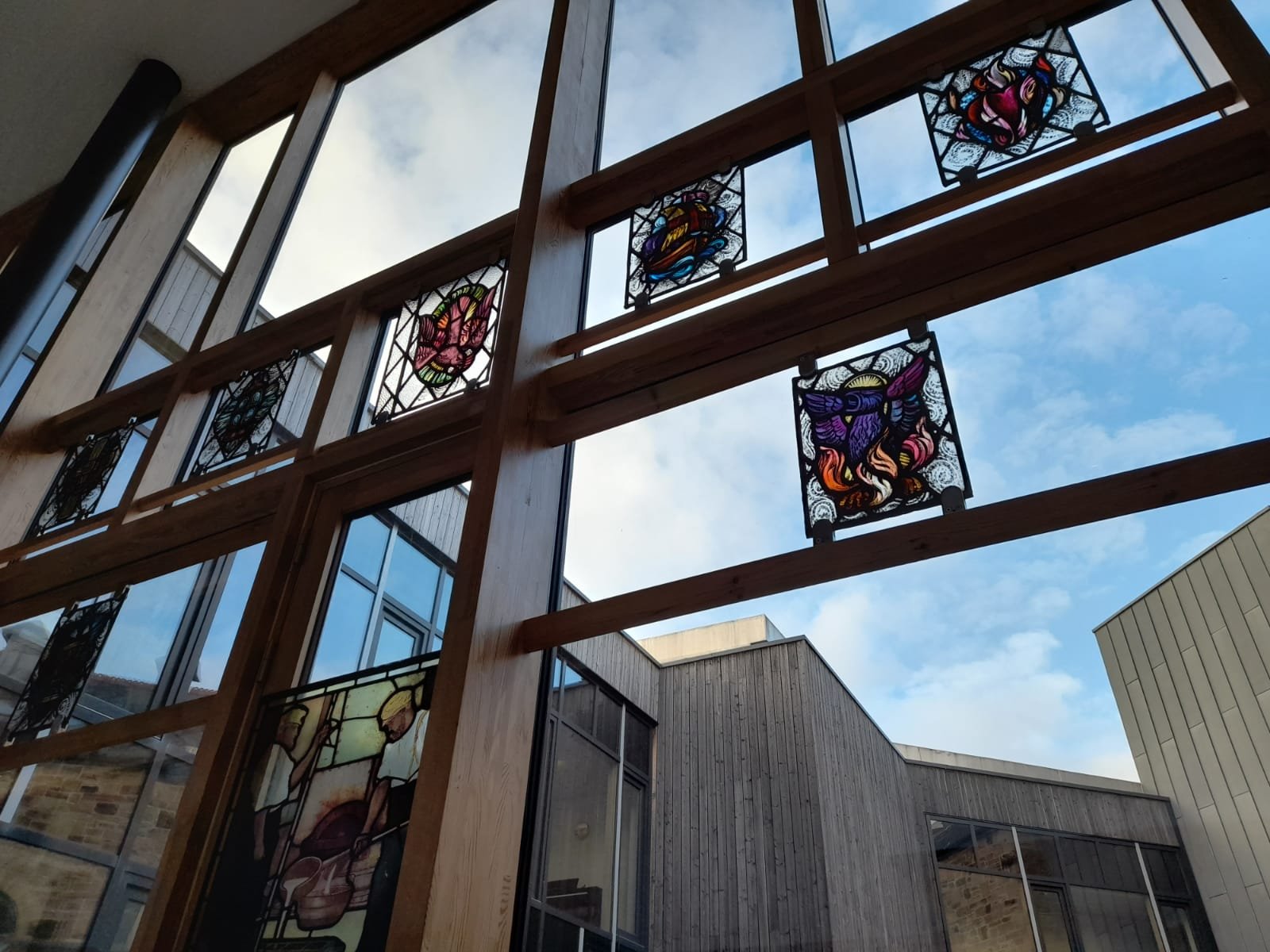
MARYHILL OLD PARISH CHURCH STAINED GLASS
In the foyer of Maryhill Burgh Halls there is a display of the stained glass windows which were originally a part of Maryhill Old Parish Church.
Maryhill Old Parish Church was built in 1826 on grounds granted to the Church of Scotland by Miss Lillias Graham of the Gairbraid Estate (daughter of Mary Hill, to whom the area is now named after). The church faced what is now Maryhill Road.
The first minister was Robert McNair Wilson, a favourite of Miss Graham and an active member of the local Temperance Movement started by Miss Graham herself and her nephew John Dunlop.
By 1835, the congregation grew so much that new galleries had to be erected in the church, increasing capacity to 940 seats. In 1925 the fabric of the church was reconstructed and a stained-glass window in the chancel was dedicated to the fallen soldiers of World War I.
The church was damaged during World War II when a parachuted landmine, launched by the German Luftwaffe landed on neighbouring Kilmun Street in 1941. Another stained-glass window was commissioned for the front door in 1948 in memory of the 107 victims of the bombing. Both World Wars stained-glass window are now lost.
The Old Parish Church before 1843. Drawn by Rev. Wilson’s wife, Mrs Robert McNair Wilson.
Frequent difficulties occurred after the war damage and the church stopped being used in 1981. After recurring acts of vandalism, including a fire in 1999, the church was finally declared unsafe and was demolished. Before the demolition, the smaller stained glass windows were moved to a chapel in the Royal Cornhill Hospital in Aberdeen. After the closure of the hospital chapel, the windows were rescued by Christine Gray, daughter of Rev. William McCormick, who then donated the windows to Maryhill Burgh Halls Trust.
After specialist cleaning, the stained glass windows are once again on display and now represent the history and heritage of the Maryhill area.
Rev. William McCormick was the minister of Maryhill Old Parish Church from 1960 until his retirement in 1983. He was fond of the stained glass panels and his daughter recall that in the summer months he would gather the parish children to tell them the stories of the panels.
The windows were made around the 1950s but the artist is not known. Rev. McCormick compiled a portfolio containing photos of all the windows accompanied with texts that describe their Christian meaning. Maryhill Museum holds the original copy of this document. You can enquire to heritage@mbht.org.uk to see it or to find more information about the individual panels.
All that remains of the church is a fenced off graveyard across from Celtic Street, at 1956 Maryhill Road. The land on which the church once stood is privately owned, whilst the graveyard belongs to Glasgow City Council. Working alongside the council, an enthusiastic group of local residents have been taking care of the ground in the hope of reopening the site as place of contemplation, away from the busy traffic of Maryhill Road. If you want to get involved, you can find the Friends of Maryhill Road Graveyard on Facebook.


